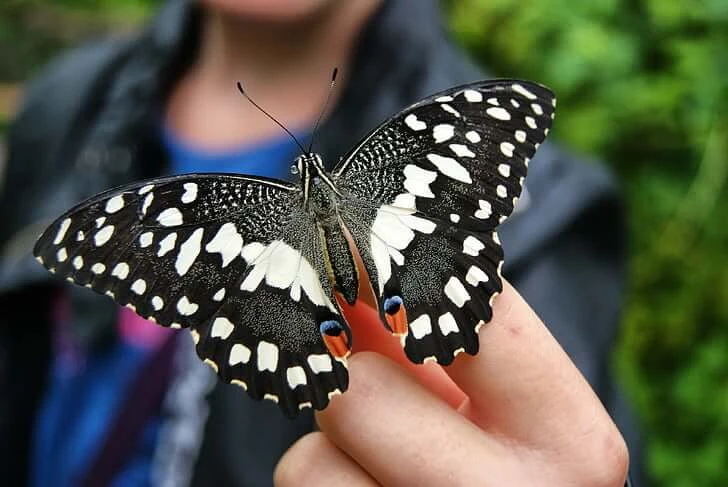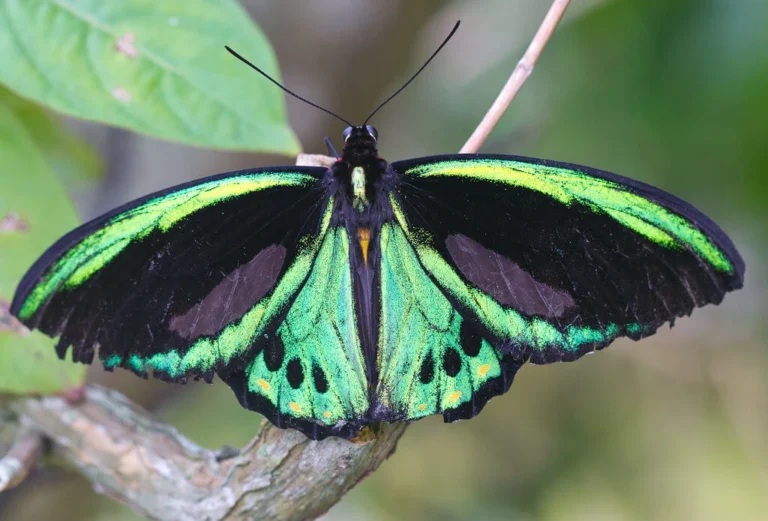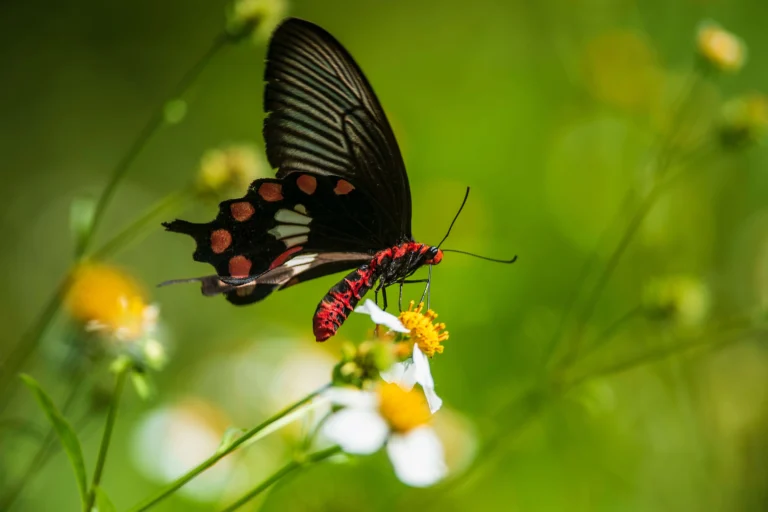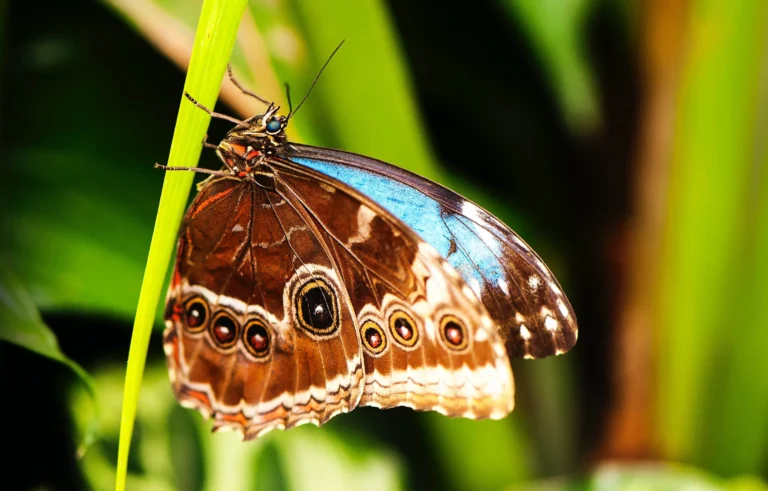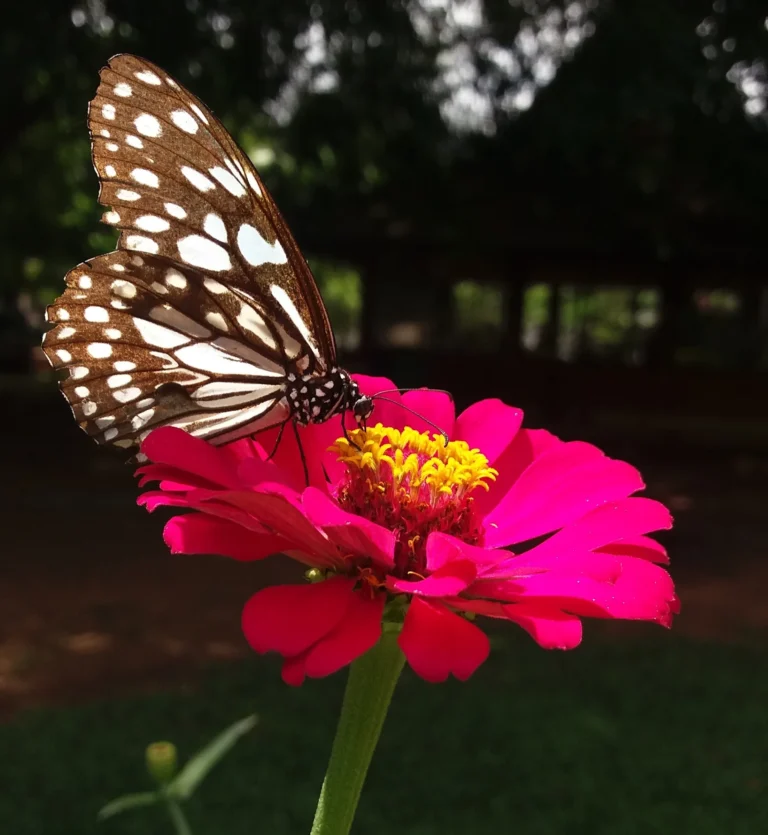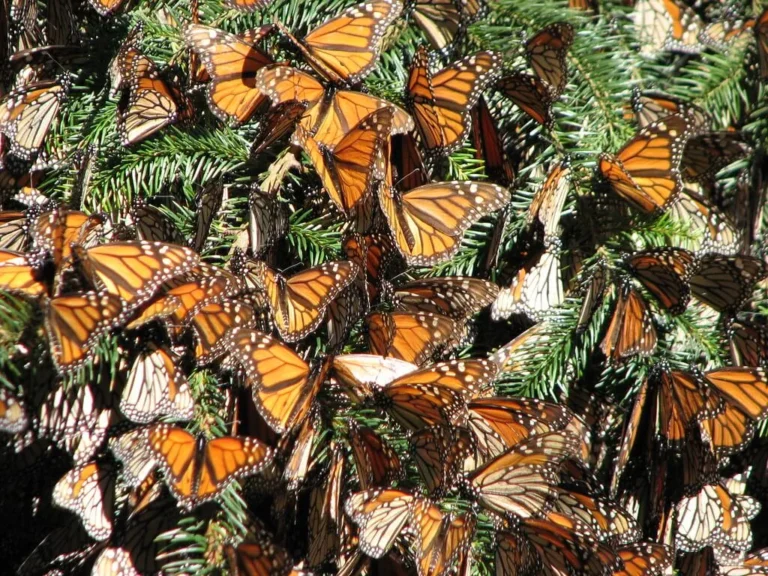Papilio Alexanor (Southern Swallow Tail) Butterfly: A Detailed Guide
The Papilio alexanor, also known as the Alexanor or southern swallowtail, is a green and yellow butterfly that flies during the day. It belongs to the swallowtail family and has a wingspan of 62–70 mm. It’s found in places like Europe’s hills, the Balkans, and parts of Asia. The butterfly starts life as an egg on special plants, then becomes a caterpillar, a pupa, and finally a grown butterfly. Birds can be threats to it. Many people admire this butterfly in art and stories. If you want to watch it, be slow and careful not to harm its home.
Table of Contents
Introduction
The Papilio alexanor, also known as the southern swallowtail, is a standout beauty in the world of insects. With its eye-catching colors and patterns, it’s a favorite for many who appreciate nature’s wonders.
But there’s more to this butterfly than meets the eye. It plays an important role in nature, making it an exciting study for entomologists.
In this article, we’ll dive into the fascinating world of the Papilio alexanor. We’ll explore its classification, learn about its lifecycle, understand its role in the environment, and discover its cultural significance.
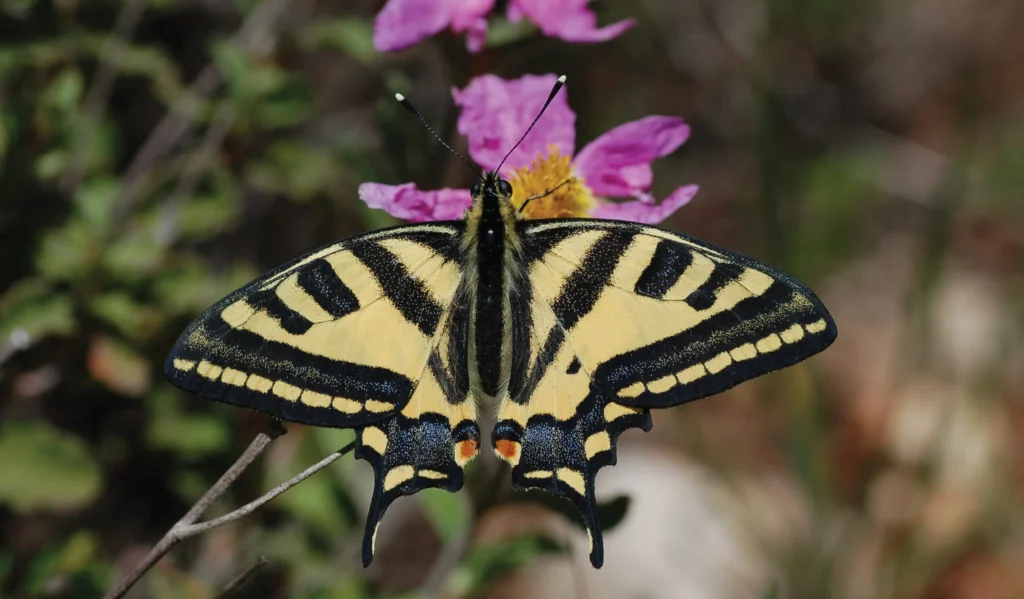
Taxonomy & Classification
Every living organism on Earth falls into a taxonomy, a complex classification that’s like a vast family tree for both animals and plants. The Papilio alexanor butterfly, for instance, finds its place in this intricate system:
- Kingdom: Animalia – A kingdom bustling with animals that are alive, animated, and responsive.
- Phylum: Arthropoda – Encompassing creatures boasting hard exoskeletons, it’s home to insects, spiders, and crabs.
- Class: Insecta – This group is for insects. They usually have three main body parts, six legs, eyes with many tiny lenses, and two feelers or antennae.
- Order: Lepidoptera – Here, you find butterflies and moths. They are known for their wings that look like they’re covered in tiny scales.
- Family: Papilionidae – This family is for a type of butterfly called swallowtails. They often have colorful wings that have a special shape.
- Genus: Papilio – There are many types of butterflies in this group. They all have their own kind of wing patterns.
- Species: alexanor – Finally, we have our star, the Papilio alexanor butterfly.
The name “Papilio” means “butterfly” in Latin, and “alexanor” might come from old stories or myths. There are other butterflies like the alexanor, but each one is unique.
Over time, the southern swallowtail butterfly has changed to live best in its environment. It belongs to the Papilionidae family, which is found in many places around the world.
By knowing where the Papilio alexanor fits in the big tree of life, we can better understand how all living things are linked together.
Physical Description
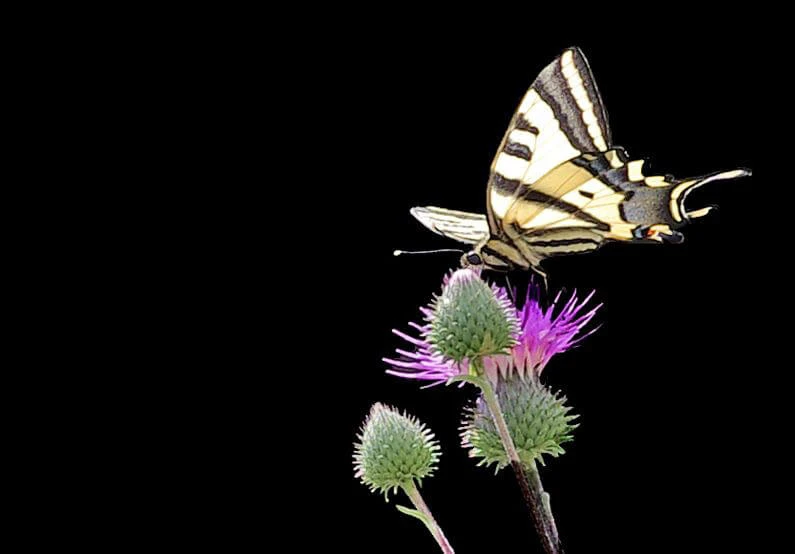
When you see the Papilio alexanor butterfly, it’s easy to see why many people love it. Its looks are both pretty and practical for the world it lives in.
Size and Shape
The Papilio alexanor is medium-sized. Its wings are about 65mm to 75mm wide from tip to tip. The wings have a common butterfly shape. They are a bit pointy, and the back wings have small tails sticking out.
Color Patterns
The main colors on the wings are greenish-blue and yellow. The top side of the wings is bright blue-green, especially in the sun. It looks nice next to the light yellow parts. The bottom side is a softer yellow with small blue and black spots.
Unique Markings and Features
The wings have black lines around the edges. There are also white and blue spots within these lines. Near the small tails on the back wings, there’s a red-orange spot with a blue half-moon shape around it. This is a special mark of the southern swallowtail.
When this butterfly flies or sits on plants, it looks very beautiful. Its colors and spots help it hide from dangers and also find friends.
Lifecycle
The life of the Papilio alexanor, like many other butterflies, is a journey of transformation. Each stage has its unique characteristics, purpose, and beauty. Here’s a detailed look:
1. Egg:
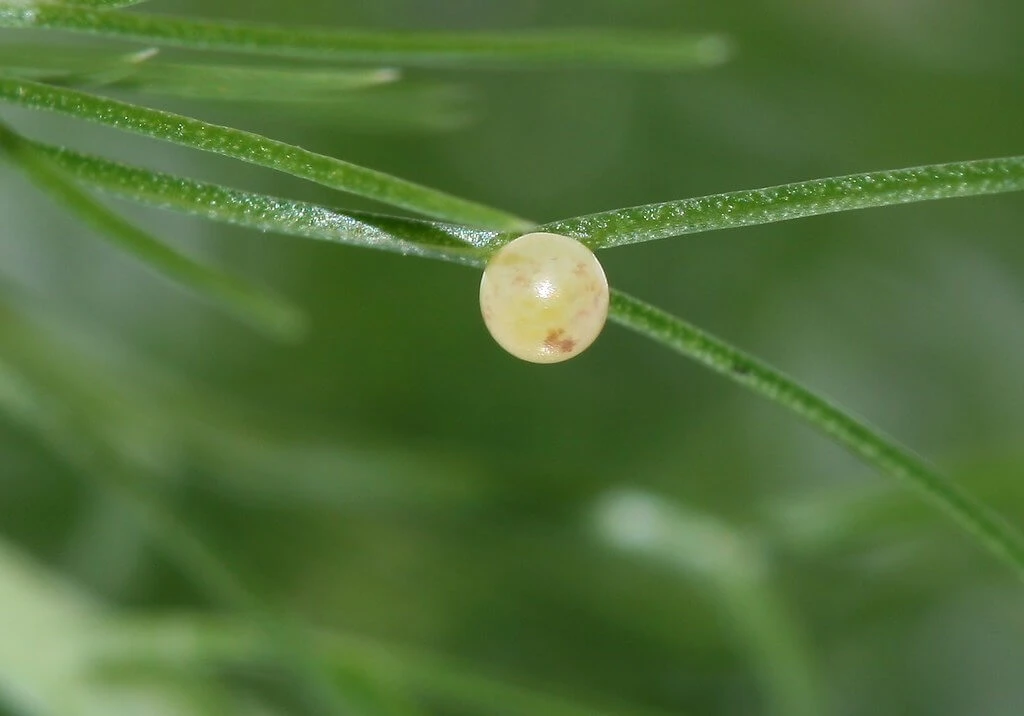
- Appearance and Texture: The eggs of the Papilio alexanor are tiny, round, and pale yellow. They have a smooth surface that may turn a bit darker as the time for hatching nears.
- Duration until Hatching: After being laid, the eggs usually take about 4-10 days to hatch, depending on environmental conditions like temperature and humidity.
- Preferred Laying Sites by Female Butterflies: Female butterflies choose the undersides of leaves to lay their eggs, especially on plants that caterpillars prefer to eat, ensuring food is available as soon as they hatch.
2. Larva (Caterpillar):

- Detailed Appearance: The caterpillar is primarily green, helping it blend in with the leaves. It has segments along its body and tiny, stubby legs. Some caterpillars might have light stripes or spots.
- Behavior: These caterpillars move slowly, often staying on the same plant for days. When threatened, they may hide on the underside of leaves or stay very still to avoid detection.
- Diet: The primary food source for adult Papilio alexanor butterflies is nectar from flowers. They use their long tube-like tongue, called a proboscis, to drink it.
3. Pupa (Chrysalis):
- Transformation Process: After the caterpillar reaches its full size, it finds a sheltered spot to transform into a chrysalis. Inside, its body undergoes significant changes, turning from a caterpillar to a butterfly.
- Physical Appearance: The chrysalis is often green or brown, looking like a small leaf or twig. Over time, as the butterfly inside gets ready to emerge, the chrysalis may become more transparent, revealing the colors of the waiting butterfly.
4. Adult:

- Lifespan and Stages of Maturity: Once the butterfly emerges, its lifespan can range from several weeks to a few months, depending on various factors. It spends the first few hours of its adult life letting its wings dry and harden.
- Behavior: Adult butterflies are active during the day. They have unique flight patterns, often fluttering and gliding. They’re drawn to flowers, where they feed on nectar.
- Diet: The primary food source for adult Papilio alexanor butterflies is nectar from flowers. They use their long tube-like tongue, called a proboscis, to drink it.
From a tiny egg to a beautiful butterfly, the lifecycle of the southern swallowtail is a story of growth, change, and survival. Each stage, with its challenges and wonders, plays a vital role in the continuation of the species.
Habitat and Distribution
The environment in which a species lives is crucial for its survival, and the southern swallowtail butterfly is no exception. From the places it calls home to the regions it’s found, let’s explore its habitat and distribution.
Preferred Habitats
The Papilio alexanor primarily thrives in warm, temperate regions. They have a preference for open areas, such as meadows and clearings in woodlands, where they can easily access flowers for nectar.
These habitats provide ample resources, including host plants for their caterpillars and nectar sources for the adults.
Geographic Distribution
Historically, the Papilio alexanor butterfly is native to parts of Europe and Asia. In Europe, it’s found in regions like southeastern France, Greece, and parts of the Balkans.
In Asia, it extends its presence to regions in Turkey, Iran, and the Caucasus. Over time, their range might have seen fluctuations due to environmental changes or human activities.
Seasonal Variations and Migrations
While the Papilio alexanor is not known for long-distance migrations like some other butterfly species, it does exhibit some movement based on seasons. You can learn more about such behaviors in monarch butterflies’ migrations.
As colder months approach, especially in the northern parts of its range, the butterfly might move to slightly warmer areas or go into a sort of hibernation, awaiting the return of spring.
Behavior
To truly understand the Papilio alexanor butterfly, it’s essential to observe how it behaves. Behavior reveals a lot about how an animal interacts with its environment, mates, and survives. Here’s a deep dive into the behavior of this fascinating butterfly:
Daily Activity Patterns
The southern swallowtail is diurnal, meaning it’s active during the day. With the sun up, it ventures out to feed, mate, and go about its daily activities. Nighttime is mainly for resting.
Flight Patterns and Behaviors
When it flies, the Papilio alexanor has a graceful yet playful style. It’s known to flutter and glide, often moving from flower to flower in search of nectar. Occasionally, you might find them basking in the sunlight, especially in the morning, to warm up their wings for the day’s activities.
Want to understand butterfly flight better? Explore the world of butterflies of Italy to explore diverse flight patterns.
Mating Rituals Specific to Papilio alexanor
Mating is a vital part of its lifecycle. Male butterflies are often seen patrolling areas, looking for a receptive female. When they find one, there’s a delicate dance: the male flutters around the female, showcasing his vibrant wings, trying to impress her.
If the female is interested, she might allow the male to mate with her. Post-mating, the female starts her search for suitable places to lay her eggs, ensuring the next generation’s survival.
Defensive Mechanisms
While they’re beautiful to look at, the Papilio alexanor isn’t without threats. To protect itself, it employs several strategies. Its green and yellow coloration can serve as camouflage, blending with leaves and flowers.
If a predator comes too close, the butterfly can quickly fly away, zigzagging to evade capture. Additionally, the caterpillar stage might exhibit osmeterium, a forked, fleshy organ that can emit a foul odor to deter potential predators.
Role in the Ecosystem
Every creature, no matter how small or large, plays a unique role in the balance of our ecosystem. The southern swallowtail butterfly, with its beauty and grace, is no different. Here’s a look at its contributions and interactions in the natural world:
Predators and Threats
The Papilio alexanor, during its various life stages, faces threats from a range of predators. Birds are the primary predators of adult butterflies, while smaller creatures like spiders, ants, and some beetles prey on their eggs, larvae, and pupae.
To some degree, human activities, like habitat destruction, also pose threats to their populations.
Role as a Pollinator
One of the most vital roles played by Papilio alexanor is that of a pollinator. As the butterfly moves from flower to flower sipping nectar, it inadvertently transfers pollen grains.
This pollen transfer aids in the fertilization of flowers, leading to the production of seeds and ensuring the continuation of various plant species.
This role is especially crucial as pollinators, in general, help maintain biodiversity and ensure food sources for many creatures, including humans.
Relationship with Specific Host Plants and Nectaring Plants
The relationship between the Papilio alexanor and its host plants is symbiotic. The caterpillar stage relies on specific host plants for sustenance. By consuming the leaves, they not only get nourished but also ingest certain compounds that might make them less appealing to predators.
As adults, the butterflies aren’t as picky but prefer specific nectaring plants. These plants provide the butterflies with the necessary energy through nectar, and in return, the plants benefit from the pollination service provided by the butterflies.
Cultural and Historical Significance
Butterflies have always held a special place in human culture, often symbolizing transformation, beauty, and freedom. The Papilio alexanor is no exception, having captured human imagination over time.
Papilio alexanor in Art and Literature
Artists and writers have often been inspired by the colors and grace of the Papilio alexanor. It’s not uncommon to find its depictions in paintings, particularly in works from regions where this butterfly is native.
In literature, while it might not always be mentioned by its specific name, references to brightly colored butterflies could often allude to species like the Papilio alexanor.
Symbolic Meanings in Different Cultures
In some cultures, a butterfly’s appearance, especially one as vibrant as the Papilio alexanor, is considered a good omen or a sign of forthcoming positive change. To others, its transformative lifecycle, from caterpillar to butterfly, symbolizes growth, rebirth, and new beginnings.
For a deeper understanding of the myriad ways butterflies inspire and resonate with us, explore our comprehensive monarch white moth symbolism guide.
Research and Study
Understanding and studying butterflies is essential, not just for their conservation but also to grasp their role in ecosystems. The southern swallowtail, being a species of significance, has been a subject of interest for many researchers.
Important Research Findings related to Papilio alexanor:
While specific research findings might be numerous and varied, studies on the Papilio alexanor have often focused on its lifecycle, habitat preferences, and interactions with its environment. Some research also delves into its genetics, trying to understand evolutionary patterns and connections to other butterfly species.
Methods of Studying and Observing this Specific Butterfly
Researchers often employ various techniques to study butterflies. Tagging is a common method where small, harmless tags are attached to the butterfly’s wings, allowing scientists to track its movement and behavior.
Observational studies in the butterfly’s natural habitat give insights into its daily activities, mating rituals, and feeding patterns. For more detailed genetic or physiological studies, specimens might be studied in controlled laboratory settings.
Tips for Butterfly Enthusiasts
For those who are captivated by the beauty of butterflies, the Papilio alexanor is certainly a sight to behold. If you’re hoping to catch a glimpse or even capture its beauty in a photograph, here are some pointers:
How to Spot and Identify the Papilio alexanor
- Appearance: Look for its distinctive color patterns — a mix of green and yellow with some blue spots.
- Habitat: These butterflies favor open areas like meadows or clearings in woodlands, especially where there’s a rich variety of flowers.
- Time of Day: Being diurnal, you’re more likely to spot them during daylight hours, particularly on sunny days when they’re most active.
Best Practices for Photographing or Observing
- Be Patient: Butterflies can be skittish. Move slowly, avoid sudden movements, and be patient as you wait for the perfect shot or observation moment.
- Use Natural Light: If you’re photographing, utilize the sun’s natural light, preferably during the golden hours of early morning or late afternoon.
- No Flash: Avoid using flash as it can scare the butterfly away and might not yield the best photo.
Ethical Considerations
- Do No Harm: Never try to touch or trap the butterfly. Observe from a distance to ensure you don’t disturb or harm them.
- Respect Their Habitat: If you’re venturing into their natural habitat, ensure you leave no trace. Avoid trampling on plants or disturbing the ecosystem.
Final Thoughts
The world of butterflies is vast and beautiful, and among its stars is the Papilio alexanor. As we’ve journeyed through its life, habitat, and significance, both ecologically and culturally, the marvel of this creature becomes evident.
From its delightful dance in meadows to its pivotal role as a pollinator, the Papilio alexanor reminds us of nature’s intricate web of life.
As readers and enthusiasts, we’re encouraged to step outside, with eyes keen and hearts open, to witness and appreciate the wonders this butterfly brings.
In doing so, we not only enrich our own lives but also become more attuned to the natural world around us, understanding the importance of every creature, no matter how small.



